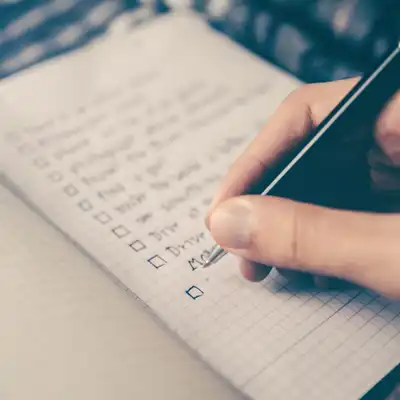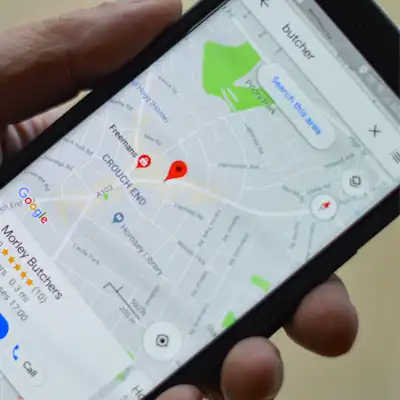Why do we get just as much pleasure — if not more — out of planning a vacation as we do actually taking one? The anticipation of a trip gets our hearts pumping, and the mere thought of new adventures and new scenery puts us in a good mood.
It’s time to build that skin-tingling, toe-tapping, heart pitter-pattering anticipation with these tips for travel planning like a pro.
How to Plan a Vacation
1. Learn from the best.
One of the simplest ways to get better at travel planning is to 1) find someone whose travel habits you admire and 2) figure out how they do it.
Maybe they’re a backpacker with an incredible blog, so you read their advice and take notes on practices you’d like to try. Or maybe they’re a friend who’s constantly sharing social media updates from glamorous destinations, so you try reaching out to them for their favorite tips.
Even people who you wouldn’t normally think to ask, like your coworkers, parents, or church friends, could have a wealth of advice. Find out what works for other people, then see if you can incorporate their tips into your own planning as you find the best things to do on vacation.
2. Make a list for everything.
For me, there are few things more satisfying than crossing items off a to-do list. From packing lists to pre-flight checklists, I’ve found that checking off tasks as I go keeps me clear-headed and organized rather than scrambling to remember everything I have to do before I go. All you need is a piece of scratch paper and a pen, and you’ll be one step closer to your travel goals in no time.
3. Get digital.
While physical lists are a useful tool, you might prefer the convenience of travel apps and other online resources. Some apps offer tools that will help you plan your trip down to the minute, while others monitor flights to ensure you’re getting the best deal. Try apps and sites like Google Travel, Hopper, and Packing Pro.
These days, AI is also helping us plan our trips. Ask an AI bot the right question, and it could create a personalized itinerary.
Consider using a familiar cloud-based system like Dropbox or Google Drive as a place to store important documents related to your trip. When planning for my own trips, I like to share a blank Google Doc with my fellow travelers. This creates an online collaboration space where we can all contribute our ideas and streamline our planning.
4. Set reminders for yourself.
Planning the perfect trip takes time, and sometimes, it’s helpful to get a digital nudge. Schedule any important errands well in advance, then set reminders for them on your phone. You’ll get instant notifications when it’s time to get your passport, when you should start looking for flights, when you need to apply for your visa, or when you should make reservations at that popular restaurant you’ve been eyeing.
5. Scope out the best deals.
One of the markers of a successful trip is when you come in under budget. And thanks to the wealth of online resources, searching for deals has never been easier.
- Take time to compare flight prices across a handful of platforms, including airline websites. Set up notifications on these sites to receive an alert when airfare to your destination changes. Get more tips for landing flight deals.
- Search for great deals on hotels using comparison sites, or recommend Airbnb to a friend to get money off your stay. Search for accommodations off the main tourist path. You’ll typically find the same quality for less money.
- Plan your meals around specials or happy hour prices.
- Be flexible about when you travel. Going during the off-peak or shoulder seasons can save you money.
If you’re willing to put in the time and creativity, you’ll be able to enjoy your trip without dreading a blow to your bank account.
6. Block off planning time.
Travel plans have a way of sneaking up, and the last thing you want to do before your big trip is to be frantically Googling “Best Places to Eat in D.C.” from your airport terminal.
Instead, spread out your planning process in the weeks — or months — leading up to your trip. Block off an hour a week to strategize and curate the trip of your dreams. If you’re tempted to put it off, try holding your planning sessions at a cute local coffee shop or bakery. Then give yourself a reward for a job well done!
7. Save favorite places to Google Maps.
This will remind you of the interesting places you found online as well as help you map out routes to get there. Seeing all the sites you want to visit on a map can make it easier to plan your itinerary.
When the Picasso Museum on your wish list happens to be down the calle (that’s “street” for my non-Spanish speakers) from a restaurant you want to try, schedule your tour and tapas for the same day. It might take creating a visual with all those little pins for you to discover their proximity and orient you in the unfamiliar city.
8. Follow the news.
Keep an eye on what’s happening at your destination as well as in the travel industry. By staying on top of current events, you’ll be able to plan better for areas to avoid or things to add to your itinerary. Is there potential for hurricanes? That’s good information to have since it might affect your plans. Is there a festival coming up? Even better.
Staying on top of travel industry news can also keep you alert to situations that could impact your itinerary. Airline strikes, a slew of cancellations, a rise in gas prices, or a widespread shortage of hotel staff might not change your mind about travel, but you also don’t want to be caught off guard if you’re forced to change your plans because of it.
How Travel Insurance Improves Your Vacation Planning

In planning a summer vacation to Europe, I knew that travel insurance made sense for my situation. Although the countries I was going to visit are generally safe for Americans, the itinerary was a little complex. The combination of multiple stops and lots of hiking means that any snag in my plans could lead to serious consequences.
As I continued finalizing my travels, I found that the act of buying insurance ultimately shaped my planning process for the better.
1. Documenting my trip costs
When I made the decision to purchase travel insurance, I opted for Seven Corners Trip Protection. More than just a supplemental medical insurance plan, Trip Protection supports everything from lost luggage to flight delays.
Because of this broad array of benefits, I needed to carefully calculate my coverage needs. This process required me to read, document, and review all the nonrefundable costs for my trip. And what an eye-opening process that was!
No matter how meticulously you’ve budgeted for a trip, if you’re not keeping track of your purchases, it’s easy to lose sight of exactly how much your trip is worth. Purchasing my insurance not only forced me to review my receipts and calculate how much I’ve spent, but it also prompted me to read and understand all cancellation policies for my bookings.
Understanding which bookings let me make last-minute changes can help me better prepare for unexpected obstacles. And, if a nonrefundable expense catches me off-guard, my Seven Corners Trip Protection could have my back.
2. Thinking through the “what ifs”
Ever heard of Murphy’s Law? “Anything that can go wrong will go wrong” might not be a particularly inspirational travel quote, but it’s a helpful mindset to adopt when assessing travel risks. When deciding which coverage I should purchase, I had to think carefully through some scary what-if scenarios.
What would happen if I twisted my ankle while hiking? Got my luggage stolen? Missed my flight? Got delayed by severe weather? This exercise wasn’t just helpful in narrowing down my insurance options. It also allowed me to plan what I would do in the event of an emergency.
I used some of my planning time to identify nearby hospitals, police stations, and pharmacies in each of my destinations. I also looked into climate and safety information, and I even used Google Maps’ Street View to “walk” through important routes.
It’s simply not possible to anticipate every travel mishap in advance. With that said, taking preventative measures, recognizing what my travel insurance covers, and making back-up plans helped take some of the stress out of my trip.
3. Building in wiggle room
Travel insurance is a great buffer, but it doesn’t provide a 100% guarantee that you won’t still have to pay some expenses out-of-pocket. In reviewing my insurance plan, I started to consider some additional ways to protect myself and my financial investment.
One easy step was to avoid cramming my schedule with time-sensitive activities. By building in downtime between activities and spacing out reservations and transportation times, I reduced the risk of a domino effect and having one delay or cancellation derailing all the rest of my plans.
Throughout this process, I was prompted to think through my trip’s costs more carefully. Having a well-padded travel budget isn’t just helpful during shopping trips. When something goes wrong on the road, having extra money to offset the unexpected expense can mean the difference between resuming your trip and packing your bags early. Having logistical and financial wiggle room will make it easier to roll with whatever punches come your way.
Plan to Travel Safely with Trip Protection.
The world can feel a little scary these days, but a great insurance plan can reduce some of travel’s biggest risks. Remember: even the highest level of coverage isn’t a substitute for wise planning. With the right blend of common sense, foresight, and trip protection, I’m feeling prepared and confident about whatever lies ahead. Contact our licensed agents or get a quick quote online.


